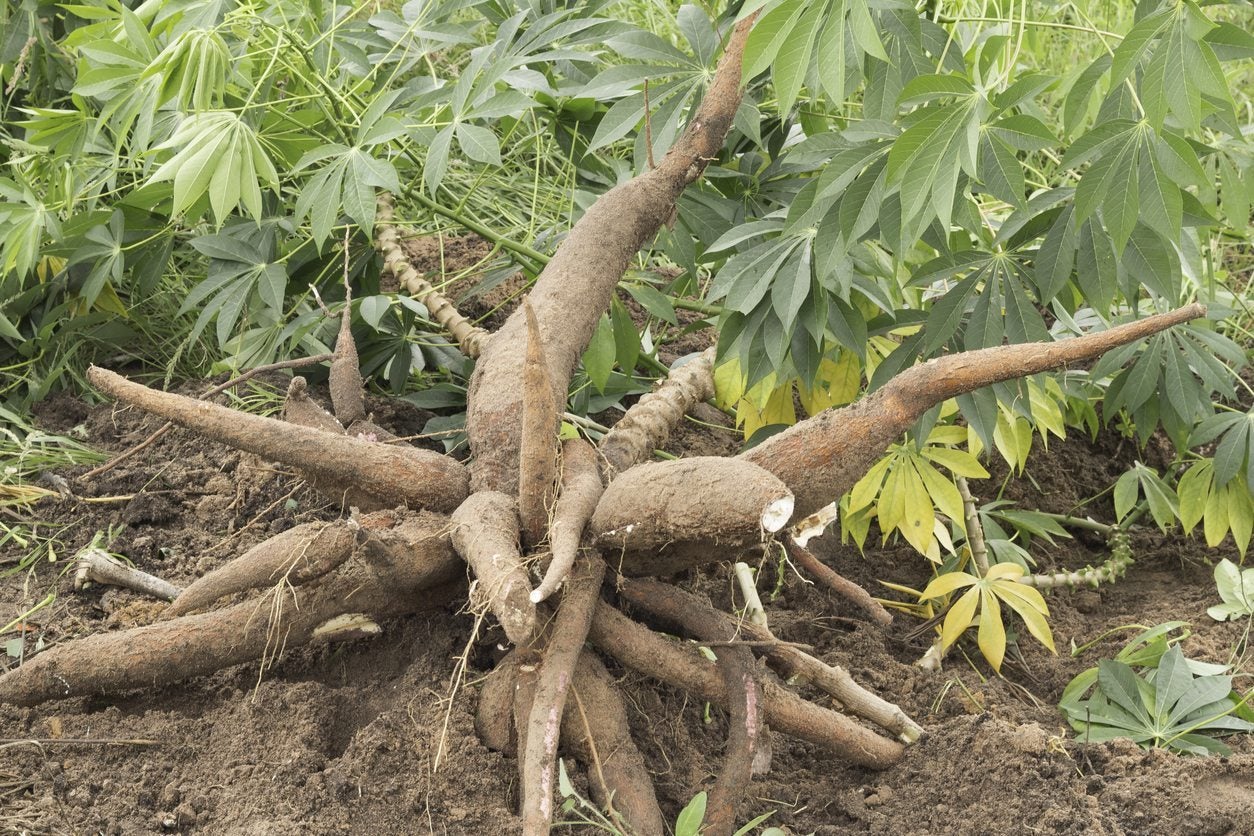Tapioca Plant Harvesting – How To Harvest A Tapioca Plant


Do you like tapioca pudding? Have you ever wondered where tapioca comes from? Personally, I’m not at all a fan of tapioca, but I can tell you that tapioca is a starch extracted from the root of a plant known as Cassava or Yuca (Manihot esculenta), or simply 'tapioca plant.' In fact, tapioca is just one of many diverse delicacies that you can create using the roots of a cassava plant. Cassava requires at least eight months of frost-free weather to produce roots, so this is a crop that is more ideal for those living in USDA zones 8 through 11. It’s easy to grow and harvesting tapioca roots is quite easy too. So, the questions at hand are – how to harvest a tapioca plant and when to harvest tapioca root? Let’s find out, shall we?
When to Harvest Tapioca Root
The roots can be harvested, cooked, and eaten as soon as they form, but if you are looking for a somewhat substantial harvest, you may want to hold off for a while. Some early cultivars of cassava can be harvested as early as six to seven months after planting. Most varieties of cassava, however, are typically of a plump harvestable size around the eight to nine month mark. You can leave cassava in the ground for up to two years, but be aware that the roots will become tough, woody, and fibrous towards the end of that timeframe. It is best to do your tapioca plant harvesting within the first year or so. Before you harvest your entire cassava plant, it is advisable to inspect one of its deep brown flaky roots to see if it is desirable to you, not only in terms of size but also from a culinary standpoint. Using a trowel, gently do some exploratory digging next to the plant. Your search will be facilitated by knowing that cassava roots can typically be uncovered in the first few inches (8 cm.) of soil and tend to grow down and away from the main stem. Once you discover a root, try massaging the dirt away from the root with your hands to expose it. Cut the root off where the neck tapers by the stem of the plant. Boil your cassava root and give it a taste test. If the taste and texture is favorable to you, you are ready for tapioca plant harvesting! Please, do remember to boil, as the boiling process removes toxins that are present in the raw form.
How to Harvest a Tapioca Plant
A typical cassava plant may yield four to eight individual roots or tubers, with each tuber potentially reaching 8 to 15 inches (20-38 cm.) long and 1 to 4 inches (2.5-10 cm.) wide. When harvesting tapioca roots, try to do so without damaging the roots. Damaged tubers produce a healing agent, coumaric acid, which will oxidize and blacken the tubers within a few days of harvest. Prior to harvesting tapioca roots, cut the cassava stem one foot (31 cm.) above ground. The remaining part of the stem protruding from the ground will be helpful for the plant’s extraction. Loosen the soil around and under the plant with a long-handled spading fork – just be sure the insertion points of your spading fork are not invading the tuber’s space, as you do not want to damage the tubers. You can further work the plant loose from the soil by gently rocking the main stem to and fro, up and down, until you feel the plant start to free itself from the soil. Using your garden fork to help lift and anchor the plant from below, grab the main stem and pull upwards and, hopefully, you will have removed the entire plant, with its root system, intact. At this point, the tubers can be removed from the base of the plant by hand. Freshly harvested cassava roots need to be eaten or processed within four days of harvest before they start deteriorating. Tapioca, anyone?
Sign up for the Gardening Know How newsletter today and receive a free copy of our e-book "How to Grow Delicious Tomatoes".

Shelley Pierce was a writer for Gardening Know How, contributing to hundreds of articles for the site.